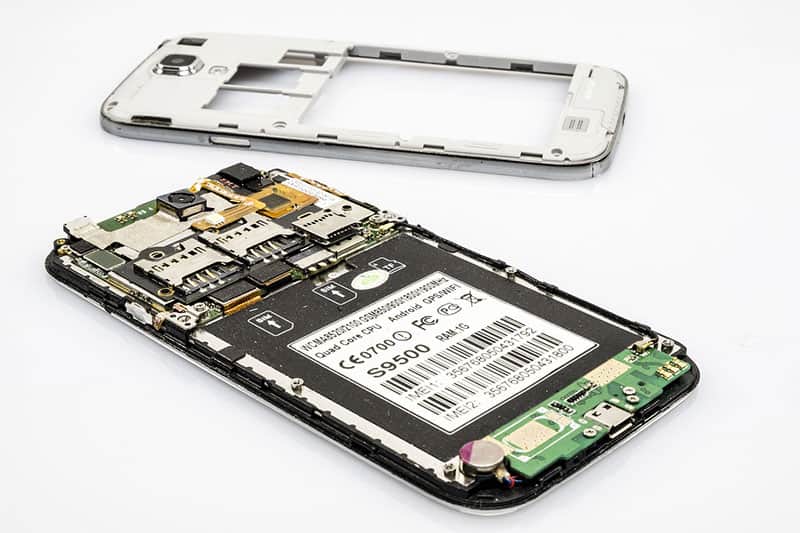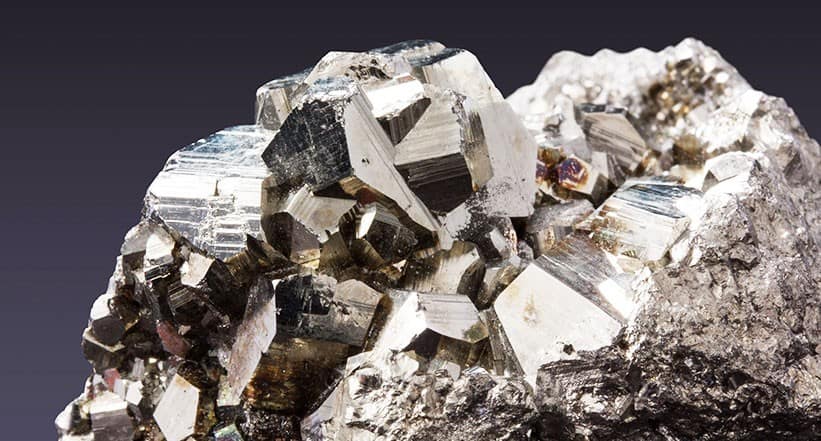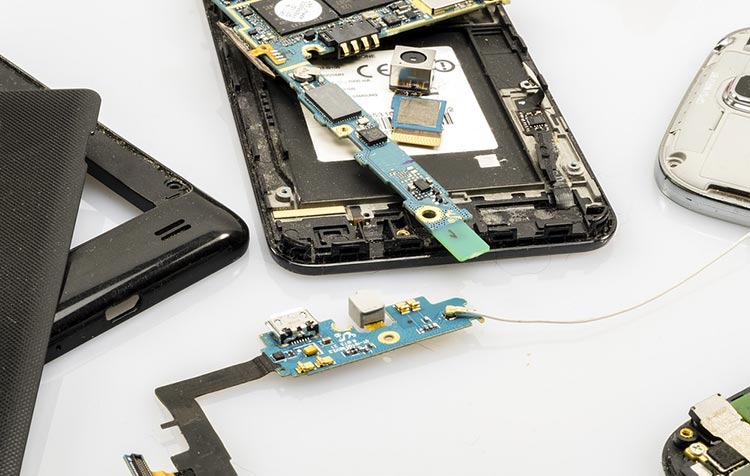What are actually Rare earths and critical metals? Whether privately or for work, many of us use technical devices such as computers, tablets and cell phones every day. Right now I am already using my laptop again to write this article. Few people know that controversial resources, so-called rare earths and critical metals are used to manufacture these technical devices. But what do we even understand by these terms? Where do rare earths come from, how are they extracted and what does their extraction mean for our environment? In this article, I would like to answer all these questions about rare metals and show you how to use this resource sustainably.
Note: Since there are so many different technical devices, I decided to focus on the most commonly used device in this article - the smartphone. While our current smartphone is in constant use, in millions of households the predecessor devices usually end up unused in drawers. This is how the important rare earths are lost.
What are rare earths and critical metals?
What exactly is behind the terms rare earths or critical metals? In the next two sections, I would like to look at the topic of rare earths or critical metals in more detail.
Rare earths, sometimes referred to as rare earth metals, are arguably some of the most important raw materials in the modern world. The 17 elements that make up the rare earths are exceptional metals that occur naturally in minerals. Below I have compiled a small overview of all 17 rare earths:
| Name | Abbreviation | Discovery Year |
| Yttrium | Y | 1794 |
| Cerium | Ce | 1803 |
| Lanthanum | La | 1839 |
| Erbium | He | 1843 |
| Terbium | Tb | 1840s |
| Samarium | Sm | 1853 |
| Praseodymium | Pr | 1854 |
| Neodymium | Nd | 1855 |
| Ytterbium | Yb | 1878 |
| Holmium | Ho | 1878 |
| Thulium | Tm | 1879 |
| Scandium | Sc | 1879 |
| Gadolinium | Gd | 1880 |
| Dysprosium | Dy | 1886 |
| Europium | Eu | 1890 |
| Lutetium | Lu | 1907 |
| Promethium | Pm | 1945 |
More about critical metals
And what is it about critical metals? Whether a metal is classified as critical depends on many factors. These include the political stability of the mining area, the price and demand for the metal, and several other aspects. Among others, cobalt, gold and tantalum are currently classified as critical. All of them are metals that are found in electrical appliances. (Article recommendation: Dispose of electrical appliances correctly)
Most rare earths and critical metals are mined in Asian and African countries. For years, China has ranked first in the extraction of rare earths. Every year, no less than 120,000 tons of these raw materials are extracted there. However, countries such as Australia, Canada, the USA and parts of Russia also mine the raw materials. However, in significantly smaller quantities. At first glance, it may now appear that rare earths and critical metals are found in large quantities, but appearances are deceptive. Some of these elements exist only very rarely, and so there is a threat of shortages. Particularly affected are the metals indium, arsenic, thallium, antimony, silver and selenium. This already existing shortage of resources is particularly problematic due to the rapid growth of emerging countries and the permanently advancing technological progress. At the current rate of development, a shortage of resources is more than likely.
Rare earths and metals in smartphones, cars and light bulbs

Rare earths and critical metals have become an indispensable part of our everyday lives. Without them, it would not even be possible to manufacture technical devices such as hard drives or laptops.
We find many rare earths and critical metals in a smartphone. Copper and gold are in the contacts, wires and circuits. Palladium is used to give the contact surfaces between the components robustness. Another extremely rare resource is in the capacitors: the metal tantalum. It is preferred because capacitors made of this metal remain particularly powerful and durable even at a small size. Raw materials such as indium and gallium are also found in the display. Rare earths used in the manufacture of smartphones include yttrium, which is used in memory chips, and lanthanum, which is found in rechargeable batteries.
Many different rare resources are used in a single cell phone alone. Although only a few grams or even milligrams of these raw materials are built into each device, according to a Statista study, 1.4 billion smartphones were sold last year alone. So tons of these raw materials are needed for their production. When I think about that number, I ask myself, does it always have to be the latest smartphone, the bigger TV or the newest "smart" gadget? With a little care and mindfulness, electronic devices can last a few years longer and perform flawlessly. Let's try to be just a little bit live more minimalist.
Rare earths are a burden on humans & the environment

As already indicated, however, some of the resources could soon become scarce. It is not only the limited supply that makes the widespread use of rare earths and critical metals controversial. The extraction of the raw materials represents a considerable burden both for the environment and for many people who have to make a living by extracting these resources. Rare earths and many critical metals can only be mined through the use of chemicals.
As a result, contaminated sludge and poisoned soil remain. In addition to acid used to dissolve the substances, other toxic wastes such as uranium, heavy metals and fluorides are also consequences of raw material extraction. These wastes can get into the groundwater and poison it permanently. Uranium and other radioactive substances, which occur naturally in many rare earths, also pose a permanent risk of radioactive contamination.
Rare earths as electronic waste
The e-waste that accumulates every year also pollutes our environment. In addition, the remains are usually not recycled and many rare earths and critical metals are lost. The e-waste that cannot be recycled ends up either in a landfill or in an incinerator. As a result, most of the raw materials that were first painstakingly extracted are irretrievably lost. So it is very important to dispose of electrical devices such as smartphones and cell phones properly so that they can be recycled. You can drop off your old devices at electronics retailers. This is because they are required by law to dispose of the devices properly. (see also the article Separate waste correctly)
Sustainable use of rare earths and metals

Now I'd like to give you some concrete tips for dealing wisely with rare earths and critical metals.
To ensure that electrical appliances last as long as possible, Marco Brandt from clickrepairWERTGARANTIE's repair marketplace is the first place to look after cell phones and the like when you're out and about. Because on the road, it can quickly happen that a mobile device slips out of the hand or pocket on the way to the streetcar or the bus and takes damage. For this reason, I am directly advised to use a protective case, as these usually protect mobile devices such as cell phones or tablets from all sides. In a representative survey, in which 5000 cell phone users were questioned throughout Germany, it was found that smartphones without protection are almost twice as likely to break as phones that are protected. "Consumers should not focus solely on the appearance of a cover," says Marco Brandt.
Depending on the model, protective cases are better or worse suited to protect the devices from drop damage. Flip cases the first choice when it comes to protecting the smart phone. I just always stick a protective film on the screen for additional protection of the phone from scratches. Try to avoid using your smartphone in large crowds. This way, you greatly reduce the risk of dropping your phone on the floor. In keeping with the Zero Waste Lifestyle eben. 😉
What to do in case of cell phone damage?
If devices are damaged or no longer function properly, it is recommended that they be repaired first - if possible. This not only avoids waste and critical resources, but also saves money. For many devices, professional repairs are not only cheaper than a new purchase, but often also cheaper than repairing them yourself at home. This is partly because the necessary tools are already available and spare parts for workshops are usually cheaper in larger quantities.
What's more, the cell phone repair shop knows its stuff, whereas I would have to learn the ropes before I could even venture to repair a damaged smartphone, hair dryer or computer. In addition to mail-order repairs, some providers and portals offer the option of going one step further and also show you local service providers in many cities in Germany. That way, we can keep our ecological footprint even smaller.
WERTGARANTIE's repair marketplace confirms that insured smartphones are repaired far more often than those without protection. Especially for devices that are very expensive to purchase - such as a washing machine, a dishwasher or even a high-end smartphone - insurance can therefore make sense.
Of course, those who have technical know-how, skilled hands and enough time can also try their hand at a repair themselves. Suitable instructions and spare parts for the respective smartphone model can be found on the Internet.
Anticipatory cell phone purchase
We can also find out in advance which devices are more robust based on experience. For this purpose, clickrepair, the repair marketplace of WERTGARANTIE, offers a monthly Repair checkwhich uses data from more than one million smartphones. The repair check can provide assistance with the question of how durable the various devices are. A robust smartphone is less susceptible to damage and therefore lasts much longer if well cared for. In this way, you not only use rare earths and critical metals more sustainably, but you can also save money at the same time.
If a new cell phone is needed at some point, second-hand devices can be a good alternative. Because if we buy a second-hand device, we can prevent it from ending up on the big pile of electronic waste. Most of the time, second-hand parts are perfectly fine. If you can't find a suitable second-hand model, it's worth finding out about the various manufacturers. In the meantime, some smartphone manufacturers have their devices produced under fair and sustainable conditions. In the Zero Waste Apps article, you can also find the eBay Classifieds app. There you can quickly find cheap, good used smartphones and other technology items.
Rare earths in cell phones and smartphones

Of course, cell phones, smartphones and other electronic devices improve our quality of life enormously and have become an indispensable part of both our private lives and our everyday working lives. But while we all enjoy the benefits of technical devices, we must not close our eyes to the problems associated with their production and disposal. Moreover, deposits of rare earths and critical metals will be depleted in the coming decades.
For these reasons, I critically question my consumption. What about you? We should all start to rethink our consumption. We don't have to buy a new cell phone every two years along with a new cell phone contract. By treating them with care, many devices last much longer and can be repaired quickly if they are damaged or defective. In this way, I produce much less electronic waste and do something for our environment. Environment something good. How do you see it? Have you already had a broken smartphone repaired? What was your experience with it? I look forward to your comments below this article.
Stay clean,

PS.: In order to get some practical tips, I contacted directly for this article with clickrepair, the repair marketplace of WERTGARANTIE for smartphones and cell phones exchanged.
PPS: On the subject of repairs I have another great Zero Waste Book tip for you: The Book Culture of repair by Wolfgang M. Heckl shows how we can all escape the throwaway society.






Dear Mr. Schulz,
hello, Christoph,
You are probably aware that the EU has appointed a special envoy for maritime policy, Ms. Gesine Meißner.
I think it is possible that you could very well contribute your extensive knowledge and experience in this area here on the political level.
Many greetings
Elke
Hello Elke,
gerne das DU wenn es okay ist 🙂
Thank you for your update! I will try to get more politically involved in the future and will also contact Ms. Meißner in this regard.
Let's make a difference together.
Best regards,
Christoph
Comments are closed.